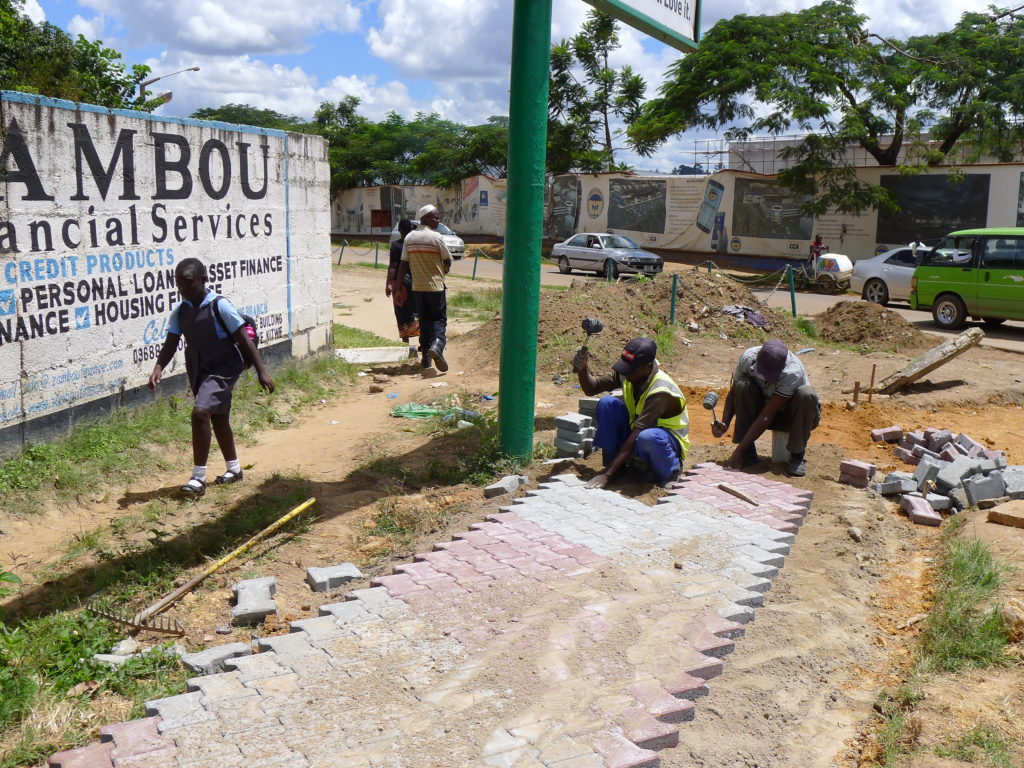One way to build stakeholder buy-in is to implement demonstration projects to highlight the benefits of complete streets. Streets that experience high pedestrian volumes, serve as important access routes to public transport, or serve school trips have potential for significant impact. By initially focusing on projects with a high probability of success, local authorities in the key cities and towns can build public enthusiasm for more widespread transformations. Typical priority actions can include the following:
- Footpath improvements. NMT improvements should be implemented at highly visible locations with poor existing facilities and high pedestrian volumes. Lessons learned can inform the design process for future interventions.
- Safe crossings. Tabletop crossings can reduce speeds and improve pedestrian and cyclist safety and are relatively inexpensive to implement. These interventions should target locations with high pedestrian volumes such as public transport terminals or schools.
- Citywide intersection retrofits. Safety at intersections can be improved through pedestrian crossings, refuge islands, footpaths, and other elements. Priority should be given to intersections that are identified as pedestrian black spots as well as intersections near schools, churches, and hospitals and in major employment areas.
- Review of ongoing projects to incorporate better NMT facilities. As an immediate action, the team can review ongoing projects to determine whether they incorporate sufficient provisions for NMT users. Since the ongoing projects are likely to have budgets allocated and contractors already in place, they offer an immediate opportunity to demonstrate good practice NMT facilities.
In the medium to long term, cities can pursue actions to scale up the types of changes achieved in the initial round of implementation:
- Design standards for pedestrian facilities. Cities should establish design standards for NMT facilities consistent with international best practices. The standards can establish minimum requirements for key elements of the pedestrian environment, including footpaths, crossings, bus stops, intersections, street furniture, street vending, and underground utilities.
- Citywide audits of NMT facilities. An audit of NMT facilities on major roads (i.e., a right-of-way of 12 m or more) is important for documenting the presence of existing facilities and identifying priority areas for improvements. The data should be stored in a GIS database.
- NMT working group. An NMT working group can coordination among implementing agencies and facilitate the sharing of best practices.
- NMT network plan. A citywide network plan for major streets can guide the implementation of NMT projects on specific streets. A network plan is particularly important for ensuring that cycle links add up to a coherent network.
- NMT friendly building control regulations. Cities should reform building control regulations to mandate active, permeable frontages and restrict large setbacks. These interventions can contribute to safer, more active public spaces.
